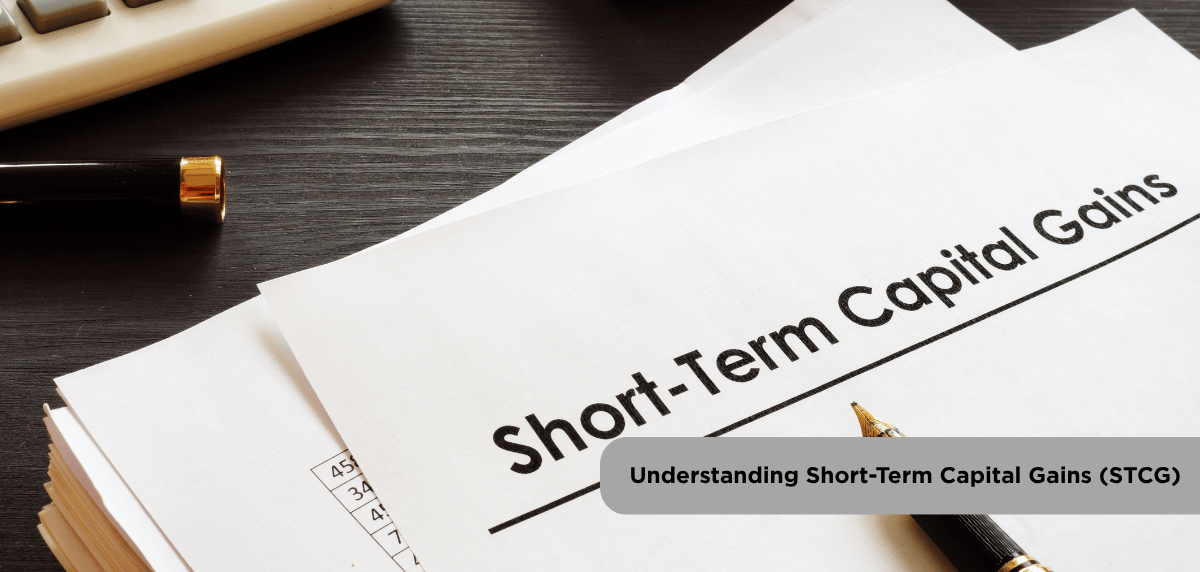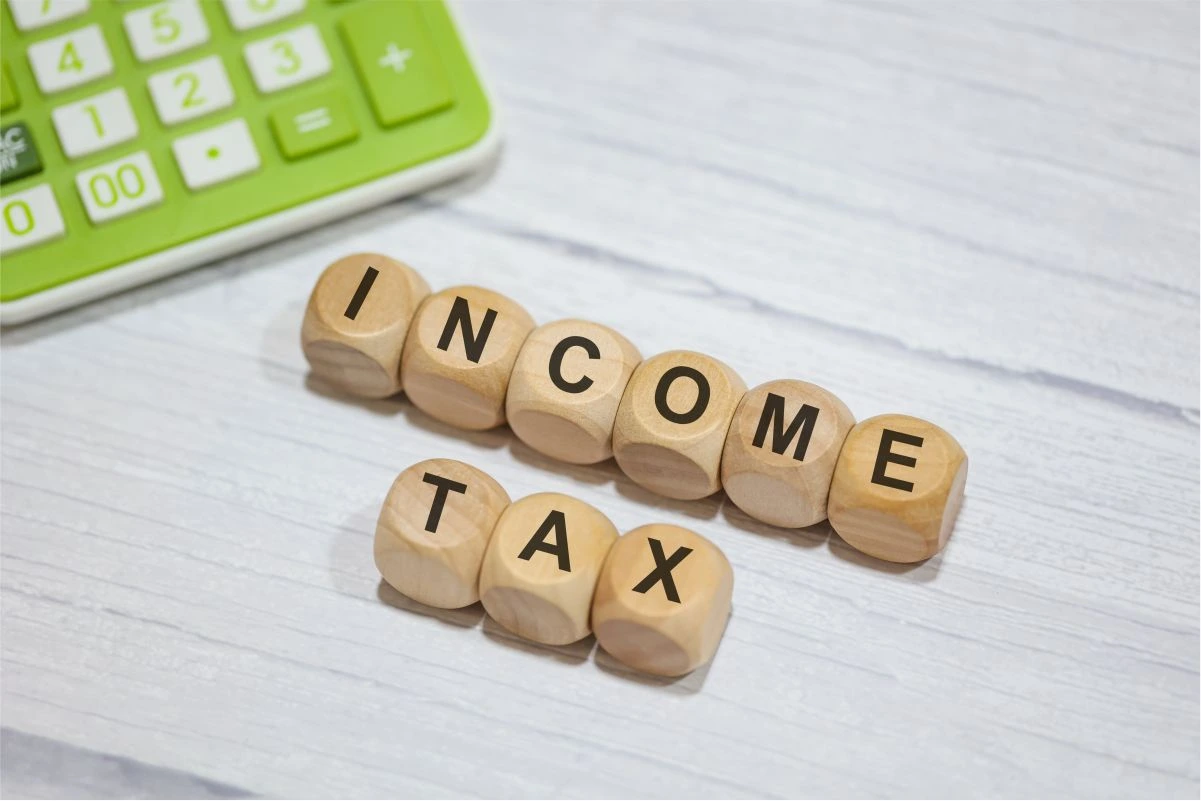Capital gains are the profits earned when you sell a capital asset, such as shares, property, or mutual funds, for more than its purchase price. These gains are classified as short-term or long-term, depending on the holding period. In India, short-term capital gains tax (STCG tax) applies when you sell assets within the defined short-term holding period.
Understanding the rules, STCG tax rate, and exemptions is important for better financial planning and avoiding confusion while filing taxes.
What is Short-term Capital Gain (STCG)?
It refers to the profit made when an asset is sold within a short holding period.
- For equity shares and equity-oriented mutual funds, this period is less than 12 months.
- For real estate, unlisted shares, or immovable property, the period is less than 24 months.
- Other assets may have a different criterion depending on the rules.
- STCG is taxable under the ‘Capital Gains’ head in income tax.
Understanding what the tax is on these gains helps in better investment decision-making. STCG is added to your total income and taxed according to the nature of the asset and applicable provisions of the Income Tax Act. For example, gains from selling listed equity shares with Securities Transaction Tax (STT) paid are taxed at a flat STCG tax rate. Other short-term gains are taxed as per your income tax slab.
Short-term Capital Gains Tax Rate
Let’s look at the short-term capital gains tax rate for different kinds of assets:
Type of Asset
| Applicable STCG Tax Rate
| Notes
|
Listed equity shares and equity-oriented mutual funds (where STT is paid)
| 15% (for gains before July 23, 2024) and 20% (for gains after July 23, 2024)
| Short-term gains tax levied under Section 111A
|
Other assets (such as real estate, gold, unlisted shares, and debt funds)
| Taxed as per individual income tax slab
| No special flat rate, liability depends on income bracket
|
If you hold these assets for a longer period than the ones mentioned above, they will be considered long-term capital assets. On the gains acquired from the sale of such assets, the applicable LTCG rate shall be applied.
How to Calculate Short-term Capital Gains?
Before you apply the capital gain tax on short-term assets, it is important to understand how the gains are calculated.
Here is a brief overview of the process:
Step 1. Find the full value of consideration, which is essentially the total sale amount you received.
Step 2. Deduct expenses incurred for the transfer, such as brokerage, stamp duty, or commission.
Step 3. Subtract the cost of acquisition. i.e., the original purchase price of the asset.
Step 4. Subtract the cost of improvement (if any).
Step 5. Apply short-term capital gains tax exemptions, if available, under sections such as 54B or 54D (we will delve into these sections later).
Step 6. Apply the formula, which is: STCG = Net Sale Consideration – Cost of Acquisition – Cost of Improvement – Exemptions
The final figure is the capital gain, on which the applicable short-term gains tax rate is applied.
Exemption on Short-Term Capital Gains**
The Income Tax Act allows certain exemptions on short-term capital gains tax.
Section
| When is it Applicable?
| Conditions for Exemption
|
Section 54B
| Gains from the sale of agricultural land used for agricultural purposes
| Exemption applicable only if sale proceeds are reinvested into purchasing another agricultural land.
|
Section 54D
| Gains from the sale of industrial land/buildings used for industrial purposes
| Exemption only if gains are reinvested into acquiring another industrial property.
|
STCG Tax Implications on Specified Assets
Now that you know what short-term capital gains tax is and what some of the other aspects related to it are, let’s see how STCG works with different assets:
1. Shares and Securities
Gains from listed equity shares or equity-oriented mutual funds held for less than 12 months are taxed at the flat STCG tax rate under Section 111A. Unlisted shares are considered short-term only if the holding period is less than 24 months. Their sale will attract taxation as per the individual’s income tax slab.
Example:
Mr. Ananth buys 100 listed company shares at ₹500 each in January 2024. He sells them in June 2024 for ₹600 each. His profit is ₹10,000. Since the holding period is less than 12 months, this gain is taxed at a 15% STCG rate.
So, his tax liability will be ₹1,500 (plus cess and surcharge).
2. Property
Selling a property (land or building) within 24 months leads to short-term capital tax. The profit is added to your income and taxed at slab rates. Unlike LTCG, no indexation benefit is available for STCG on property.
Example:
Ms. Noor sells a residential flat after 18 months with a profit of ₹5,00,000. Since the holding period is less than 24 months, this qualifies as a short-term capital gain and is taxed as per her income tax slab.
3. Mutual Funds
Specified mutual funds (wherein 65% of the asset allocation is toward debt and money market instruments) acquired after April 1, 2023, are taxed as short-term, regardless of the holding period. Taxation applies as per income slab rates.
4. Bonds and Debentures
Market-linked debentures and unlisted bonds are always treated as short-term capital assets. Hence, gains from these assets are subject to short-term capital tax, regardless of the holding period. These are taxable according to the individual’s slab rates.
5. ULIPs and Others
ULIPs with premiums exceeding 10% of the sum assured or annual premiums over ₹2.5 lakh are considered capital assets. Gains from their redemption are taxed as capital gains and are subject to LTCG and STCG taxation accordingly.
Key Points to Note about STCG
Based on the above information, here are the key points to keep in mind regarding STCG:
- The STCG tax rate of 15% is exclusive to listed equity shares and equity-oriented funds under Section 111A of the Income Tax Act.
- For other categories like property, gold, and debt instruments, capital gain tax on short-term assets is directly linked to your income slab.
- Indexation benefits are not available on STCG (unlike LTCG). STCG tax calculation does not take into consideration any indexation benefits either.
- Investors can use a tax calculator to estimate liabilities accurately and plan better.
Short-term capital gains arise when you sell assets within the specified holding period, and they are subject to different tax rules based on asset type. The short-term capital gains tax can either be a flat rate under Section 111A or according to your income tax slab. It is advisable to use a tax calculator to estimate your liability and avoid surprises at the time of filing.
** Tax exemptions are as per applicable tax laws from time to time.





















